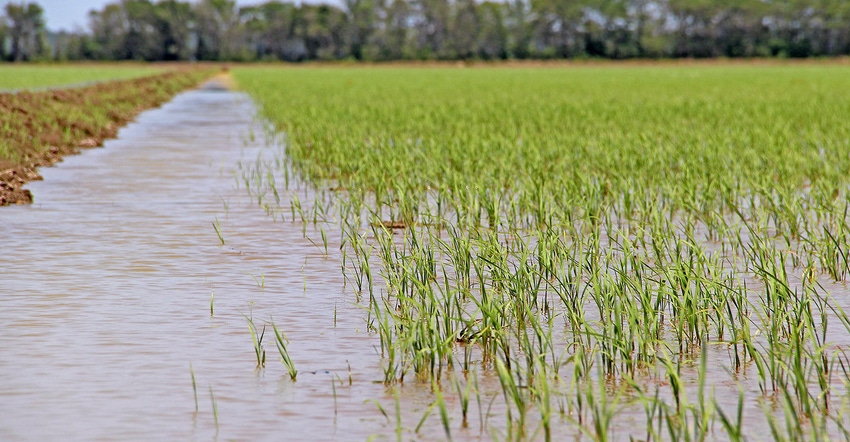July 18, 2019

Navigating the federal and state conservation program waters can be challenging, to say the least. Farmers can spend hours trying to figure out how to participate in a program only to find it’s not available in their state, says Josh Hankins.
“There are a lot of federal agencies offering programs, and there are state programs,” says Hankins, director of grower relations and the Rice Stewardship Partnership for USA Rice. “It’s all acronyms and keeping everything clear is extremely difficult to do.”
That’s why USA Rice spent two years putting together a website that will help rice growers pursue those programs. Hankins talked about the tool — the Conservation Program Search feature — and other conservation program information during a University of Arkansas System Division of Agriculture Food and Agribusiness Webinar. (Click on https://bit.ly/2J6pwQU.)
Hankins, who is based in Arkansas, says the USA Rice Federation and its four member organizations have become more aggressive in seeking ways to help rice producers improve conservation efforts on their farms.
In 2013, USA Rice formed a working partnership with Ducks Unlimited. “One of the first things we did was put a study together that showed the cost of replacing all of our existing rice habitat with managed natural wetlands would exceed $3.5 billion,” he said.
“Over half of our North American dabbling ducks winter in one of our rice-growing regions. It shows you how important it is to keep rice healthy, efficient and economically viable, not only for the economies of the states they’re in but also for our migratory birds. Essentially, what's good for rice is good for ducks.”
2014 farm bill
The 2014 farm bill created a program called the Regional Conservation Partnership Program, which “took a small sliver” out of the current conservation budget, put it in a pot and made it a competitive program where farmers could apply for those dollars.
USA Rice put together the applications — and the necessary private funds to match the federal dollars — for a list of eight successful partnerships that Hankins displayed during the webinar presentation.
“In 2015, we landed a $10 million project spread across all six of the major rice growing states, which was led by Ducks Unlimited and USA Rice,” he noted. “Since then we've grown that program into eight across all of our rice regions. After all these have been delivered, this will bring over $80 million to working rice lands for voluntary conservation practices.
“These dollars would be going to other parts of the country had we not successfully advocated for them.”
The CSP is designed for farmers and for working lands. It can build on existing conservation efforts while strengthening operations.
In the new farm bill, the Agricultural Act of 2018, the Conservation Stewardship Program was converted from an acre program to a dollar program, Hankins noted. “Because of that conversion, some of the funding was significantly dropped. The only way to qualify for our CSP is if you grow rice. If that is not the case, you cannot apply.
Competitive programs
“As most of you know, NRCS programs are competitive. This does decrease some of the competition, and the likelihood of getting funded could be significantly higher. Once again, we have people who can help. We work hard for these dollars so you can participate in these programs.
The Conservation Program Search website feature can be reached by clicking the Conservation Search button on the https://www.usarice.com/ website.
“I think you will find it of interest and a good tool for your farm, your business, your consultant or whoever helps you determine what conservation programs work for you in your geographic location and on your farm,” he noted.
“This was designed for rice and only for the programs available in our six rice states. We won't put something on here that a rice grower won't find helpful. It's designed for you. Please take time to explore what we put together and offer some feedback. We want to help you be more efficient and possibly find programs you didn't know about that could be of benefit to you.”
For more on the University of Arkansas Food and Agribusiness Webinar Series, visit https://bit.ly/2E2BEla.
About the Author(s)
You May Also Like






